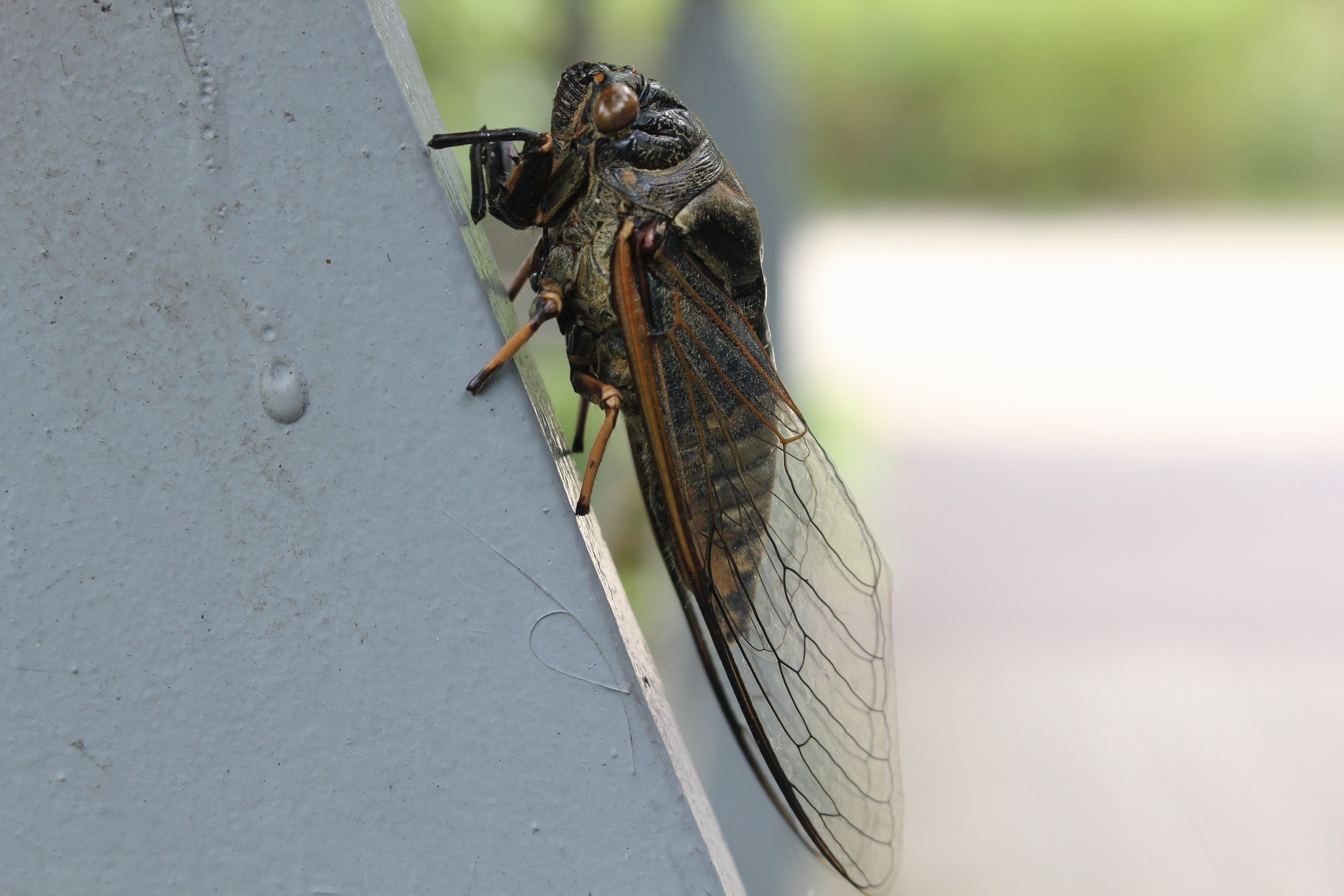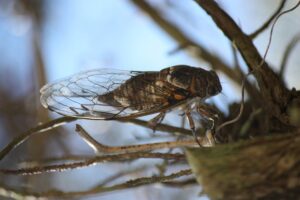The buzzing melody of cicadas in Illinois has caught everyone’s attention. It’s mating time for these creatures and they are unveiling this stage in a grand manner. Cicadas were seen in droves and their sighting is still occurring in some places. They’ll continue surfacing till early June as per the experts. But the humming won’t start abruptly, it will take a few days.
The rising and falling numbers of cicadas across America and particularly in Illinois have been observed by Dr. Gene Kritsky, the dean of Behavioral and Natural Sciences at Mount St. Joseph University. According to him, a dropping number doesn’t mean that their loud buzzing or sightings will stop completely as they’ve to accomplish their life cycle above ground.
Kritsky stated, “Their loud singing will continue till mid-June gradually becoming less audible by the end of June.”
The Process of Mating
After emerging from underground cicadas take about five days to initiate their chirping activities. Their loud humming is how males attract females for mating purposes. Adult cicadas have a lifespan of around three to four weeks following emergence during which reproduction takes place hastily.
Post copulation females lay eggs in tree branches. While some male cicada might die soon after mating, others survive longer. The eggs hatch over time within around six or seven weeks followed by nymphs falling on ground beginning one more life cycle.
Key facts about cicadas,
- Lifespan, Adult cicadas have three or four weeks after emerging.
- Mating sound, Male makes loud noise to get female attention.
- Egg laying routine, Females lay eggs on tree branches which hatches within six or seven weeks later.
- About Life Cycle, Nymphs falling on ground starts another life cycle.
The Impact on Environment
The cicadas after dying serve an ecologically vital purpose. Their decomposed bodies improve soil fertility. Nature Conservancy suggests adding dead cicadas to waste recycle pile which adds to the continuity of nature. However, the whole decomposition leaves behind a bad smell for some time.
“They are freely available nutrients for trees” said Kritsky. If weather conditions are suitable, then full decomposition will be done in couple weeks with smell disappearing before that.
Difference in Emergence
Several suburbs have reported increased number of cicadas while regions like northwest suburbs and Chicago itself hardly saw any. According to a US cicada sighting map, these places may not witness much activity at this point as emergence phase is probably over by now. The historic 2024 emergence includes two sets of cicadas Brood XIII and Brood XIX simultaneously appearing for the first time in more than two centuries. Most parts of Illinois just experienced one brood, but Central Illinois might have seen both.
Next Generation Is Here
For people who observed large counts this emergence might give them another opportunity this summer witnessing historic event when eggs hatch around mid-July, between six or tens week after being laid. Knowing about nymphs falling can be thrilling if they are seen under right circumstances.
Kristsky said “Under proper sunlight people may spot nymphs falling.”
Musical Interest
The unusual appearance of two sets Periodic Cicada Broods in Central Illinois has garnered worldwide attention especially for their mating songs. Karen Power, who is a composer making use of nature sounds in her music, came to Funks Grove to catalog cicada noises. Power travelled different continents recording environmental sounds and was fascinated by peculiar music composed by the likes of Electronic Music Trailblazer Pauline Oliveros and musician David Rothenberg.
“Their performance with cicadas in natural setting was simply amazing.” said Power.
The niece and ebb of sound within cicada choirs holds her interest. She often derives inspiration from environmental soundscape fondly compares the continuous cacophony of cicadas with the constant flow of a river.
“It feels like looking straight down at the moving water it may seem static, but we know that’s not true. That’s exactly how I feel about the ongoing sounds [cicadas]” she stated.
Method Of Recording
Power utilizes quadrophonic (four channels) for recording purposes which allows creating an immersive audience experience during presentation. The performers follow environmental setup as audience sits in a quadrant structure. Rather than putting forth a predecided plan for composition, Power waits to capture every field sound before determining on final layout of her piece.
“Forcing ideas upon what I’m hearing here wouldn’t be right.” She spoke up.
In her piece about cicadas, Power plans on using variety of stringed musical instruments maybe building wall of sound feeling complemented by deep instruments like contra bass clarinet. Different pitches from 13year and 17year long duration Cicada broods have intrigued her making their way into future compositions.
The Concluding Part
The cicada occurrence in Illinois is not ending anytime soon. Even though the coming out stage is slowing, the breeding period is at its peak. People should be ready to listen to the intense mating sounds of cicadas until midJune. The eggs are expected to emerge in midJuly. Benefits like enriching the soil and creating a distinctive sound experience show how significant these bugs are for nature’s life cycle.











+ There are no comments
Add yours